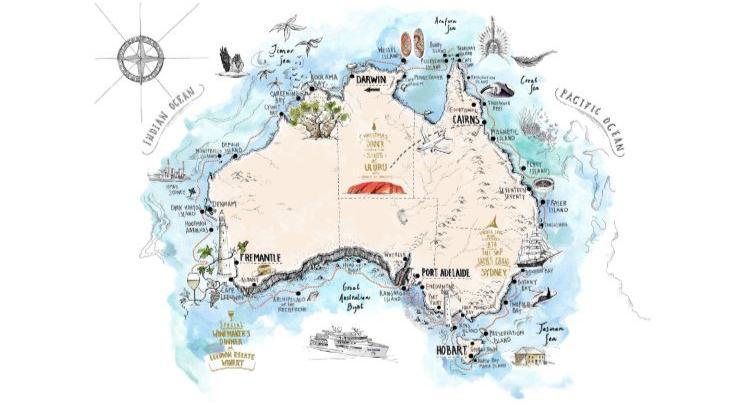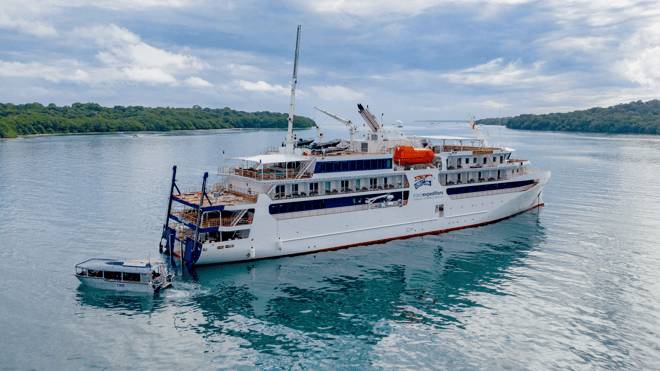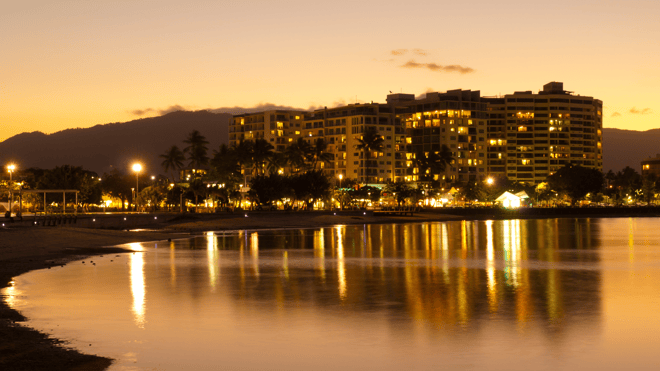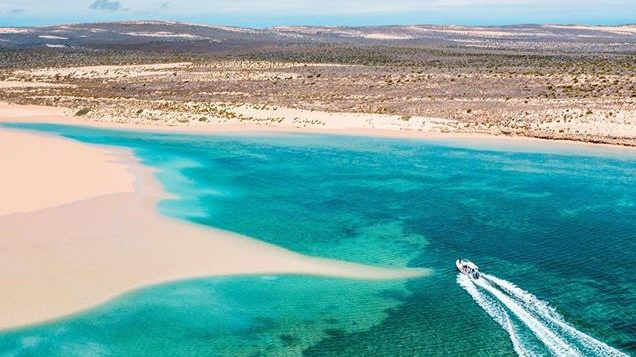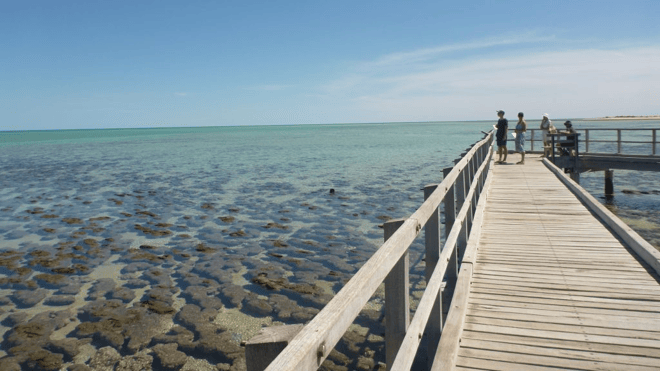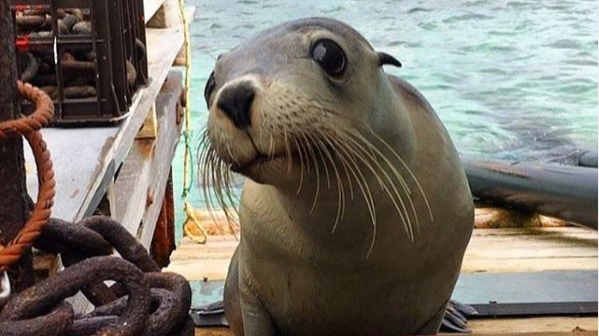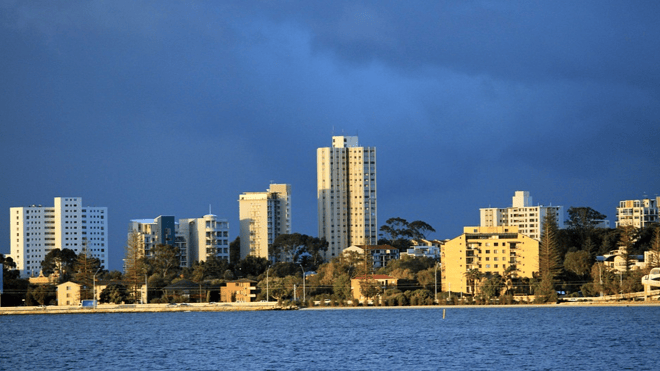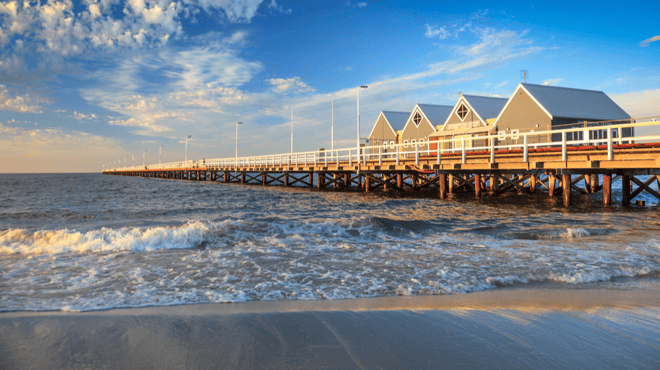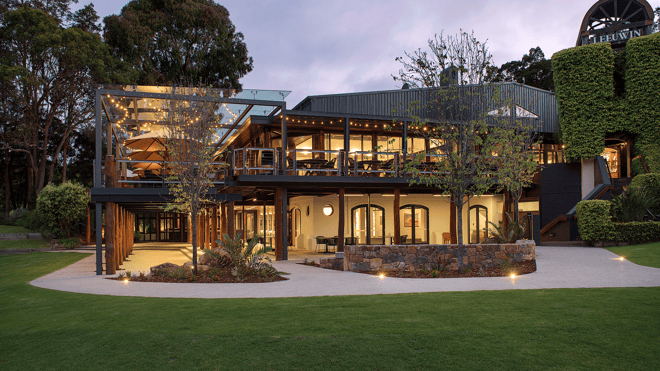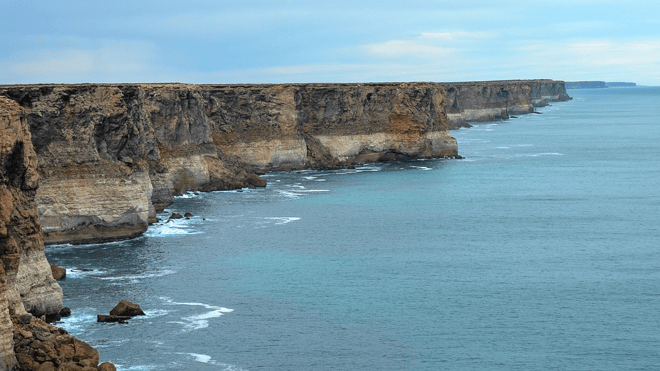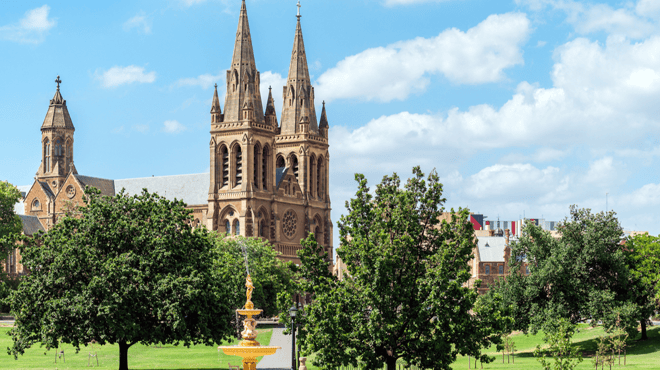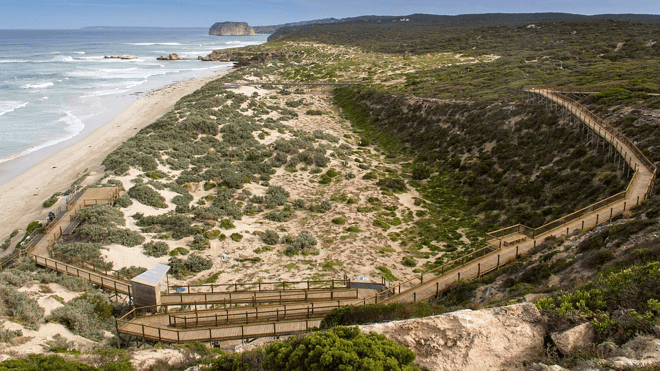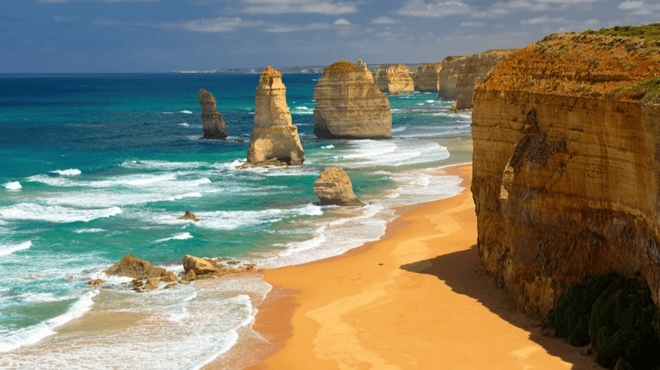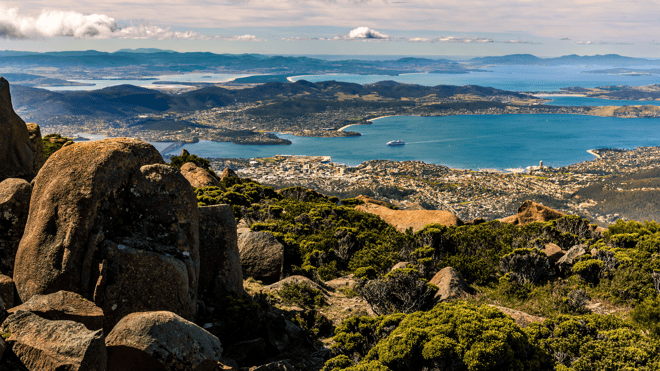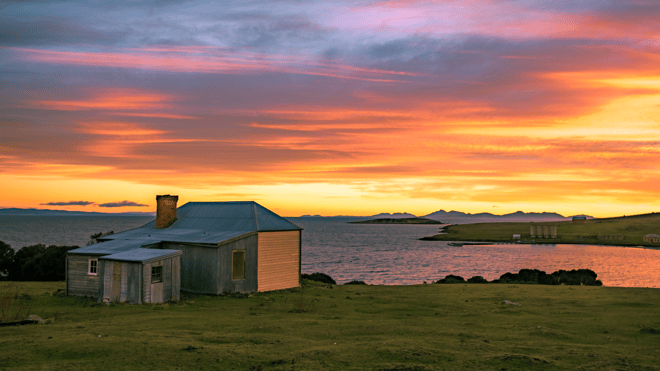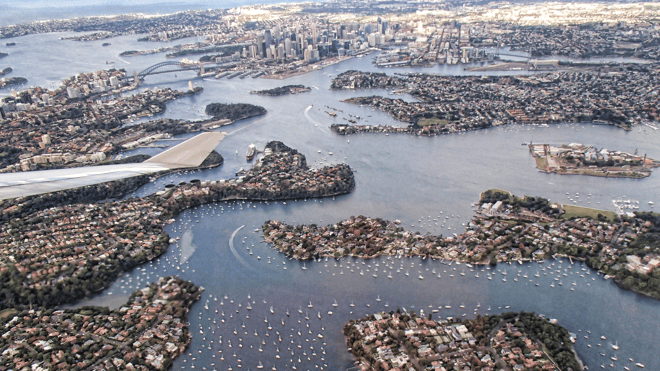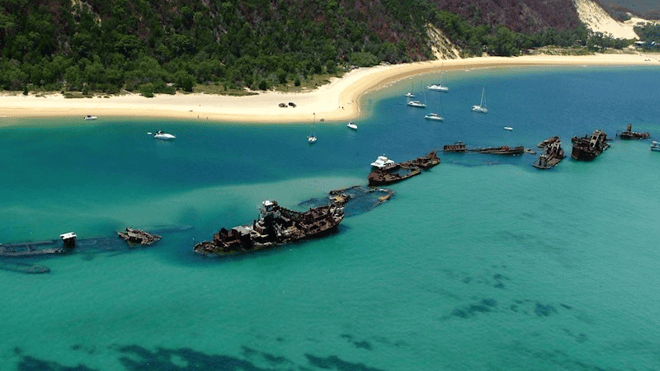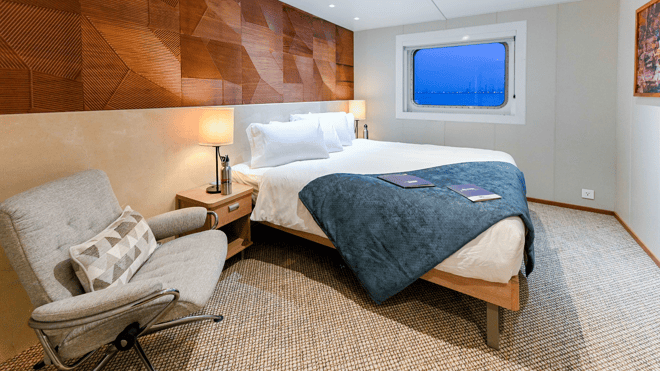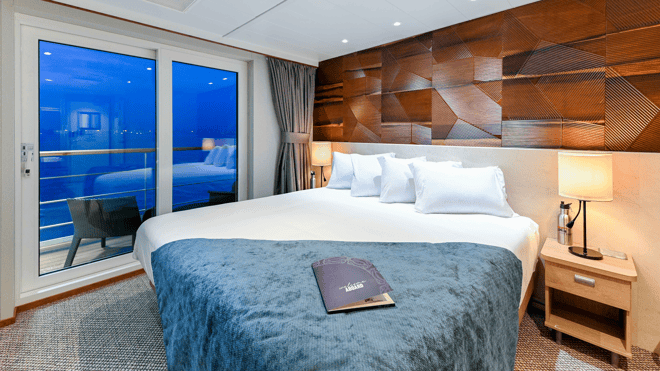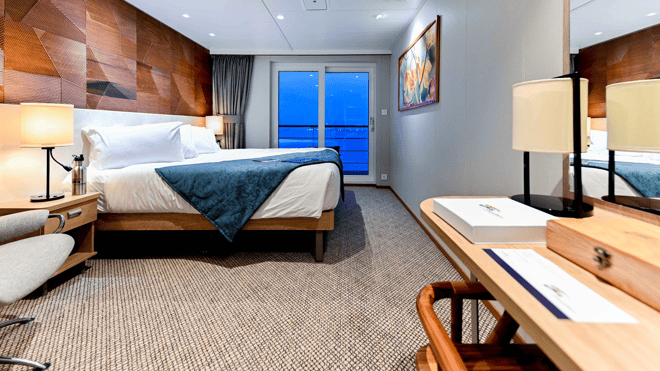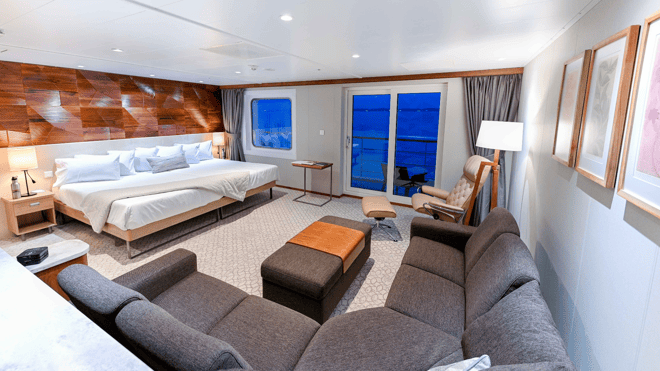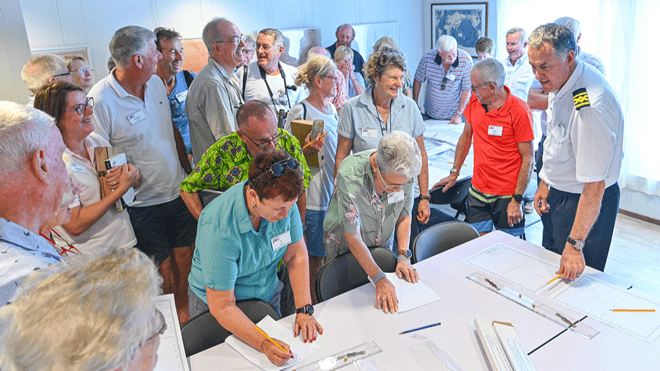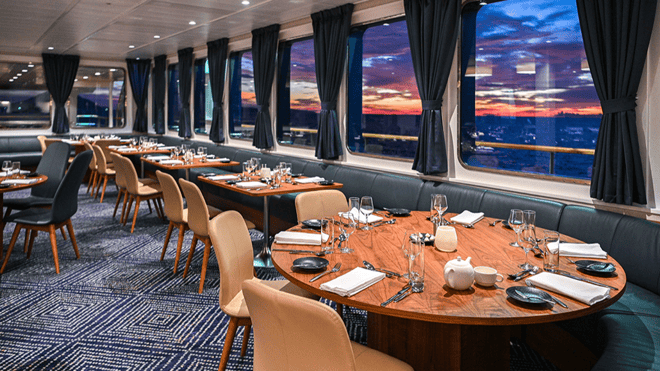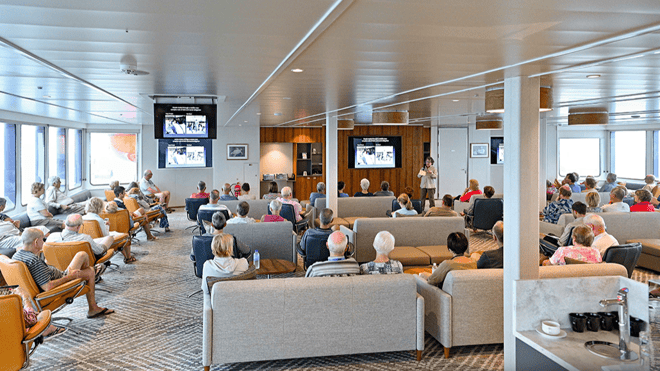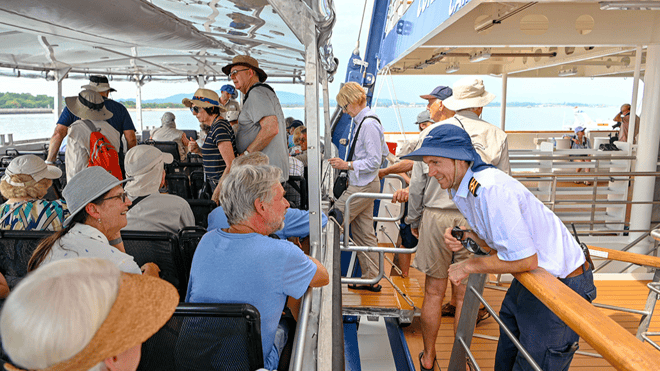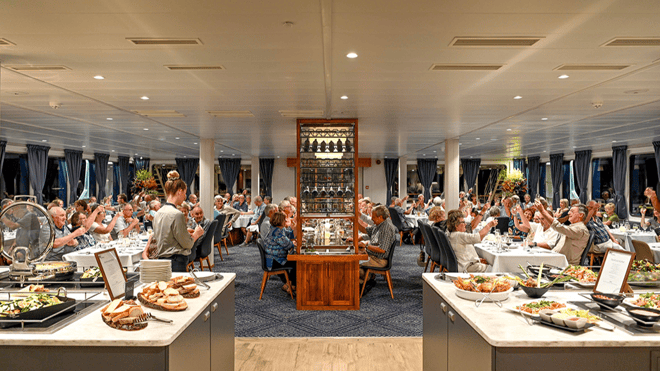Circumnavigate Australia on an in-depth, all-inclusive small ship expedition
Sailing aboard Coral Adventurer, our voyage will commence from Cairns on the 17th October 2022 and undertake a full circumnavigation of the Australian Coastline over 60 days (59 nights).
With only 60 staterooms available for this voyage, this is an intimate and personal journey of discovery. We have designed a voyage that will be a celebration of history, culture, nature and Australian Maritime history. With our unique Xplorer tenders, explore hard-to-reach locations of historic significance or natural beauty.
Visit famous places and share stories of historic maritime events that shaped our nation from ancient times to early explorers and more modern wartime. Be immersed in the arts and cultures of the people and communities of Australia on your travels. Whether it be coastal walks, snorkelling the reef, sharing amazing wildlife encounters or just taking in the scenery, you will enjoy a unique perspective of the greatest coastline in the world.
An experienced Expedition Team, along with guest lecturers and special guests, accompany and guide our voyage. Their commentary and skill at storytelling will immerse you in the culture, history and nature of the Australian coastline.
- All excursions and sightseeing
- Use of Xplorer tenders and zodiacs
- Kayaking and snorkelling
- Daily lectures and briefings
- Listed charter fights
- All meals freshly prepared on board
- Showcase wines, beers, juices and soft drinks with daily lunch and dinner service
- 24-hour selection of coffee and tea
- Laundry (some restrictions apply)
- All entrance fees to National and Marine Parks and Ports
- All port taxes and charges imposed by governing authorities
HIGHLIGHTS
- Visit historic Careening Bay for a service celebrating 200 years since the voyages of Rear Admiral Phillip Parker King.
- Discover the ancient and otherworldly stromatolite fossils at Denham
- Explore our Anzac history with time ashore at Albany
- Cruise by the striking sea cliffs of Bunda in the Head of Bight
- Meet the charismatic Australian wildlife on Kangaroo Island
- Enjoy the flavours of dairy and beef with a visit to the ruggedly remote King Island in the Bass Strait
- Retrace the voyages of Captain James Cook at key landing sites on Australia’s East Coast
- Explore World Heritage nature and share stories with indigenous guides on Fraser Island
SPECIAL EVENTS
Included in your circumnavigation cruise are three special events.
Winemaker’s Dinner at Leeuwin Estate winery, Margaret River, Western Australia
Enjoy a memorable 4-course regional degustation dinner with matching wines from the “Art Series” collection with introductions from the chef and winemakers.
Sail on the historic Barque's Soren Larsen on Sydney Harbour
Enjoy the history and the thrill of tall ship racing as guests board the historic Barque’s Soren Larsen and the Southern Swan for a daylight sail through the heads at Sydney Harbour.
Dinner under the stars at Uluru – with private flight transfers
A special charter flight will transport guests to the red centre for a traditional welcome and tour, sunset drinks and entertainment overlooking Kata Tjuta followed by a delicious dinner at the renowned ‘Sounds of Silence‘ experience. After stargazing and a nightcap, we will dim the lights for our return charter flight back to Cairns the same evening.
Departing Cairns: 17 October 2022
Your 60 day voyage encompasses the entire coastline of Australia. Voyage is set to commence from Cairns on the 17 October 2022 and will undertake a full circumnavigation of the Australian Coastline over 60 days (59 nights). This is a once in a lifetime and never to be repeated expedition of discovery and we would love for you to join us.
We have designed a voyage that will be a celebration of the maritime history, indigenous cultures, and the natural landscapes of Australia.
Cooktown
Cooktown is justifiably famous as the site of the first white ‘settlement’ in Australia when Captain James Cook, having struck the Great Barrier Reef off the coast north of Cape Tribulation, struggled up the coast and beached the H.M. Barque Endeavour on the shores of the Endeavour River. Cook and his crew were to stay on the river’s edge from 17 June to 4 August, 1770. It is a charming town which wears its history – lots of statues of Captain Cook and a number of impressive buildings constructed during the gold mining boom at Palmer River in the 1880s – with ease. In recent times it has been driven by tourism and, particularly, fishing.
After a Welcome to Country from Waymburr Warra Elders, spend the morning exploring this historical township. See Milbil Wall at the Wharf, which tells the story of the Guugu Yimithirr people, visit the James Cook Museum, and make the climb up Grassy Hill for views of the Endeavour River.
Traditional Custodians: Guugu Yimithirr people
Lizard Island
We spend a whole day at Lizard Island where there is time to hike to the summit of Cook’s Look and enjoy the same view Lt. James Cook did when searching for safe passage through the maze of coral reefs. Snorkel over giant clam gardens from the beach at Watson’s Bay, relax on the white-sand beach beneath shady she oak trees and learn about the tragic story surrounding Mary Watson.
Osprey Reef
One of the world’s best dive sites, Osprey Reef is a submerged atoll in the Coral Sea. The top of a mountain which rises from the seafloor, surrounded by a vast ocean, draws many beautiful and rare marine creatures to its plummeting walls. Osprey Reef is a highly prized tropical dive location amongst scuba divers, called an ‘oasis for living creatures of all kinds’ by Sir David Attenborough. The vibrant corals and crystal-clear waters make it an unforgettable place to discover. Here we will spend time in the water exploring the 30m deep lagoon and drift diving the walls, where you may see large pelagic fish, rays, and sharks drawn in from the surrounding deep blue to enjoy the richness of this ocean oasis.
Osprey Reef is a true expedition-style destination and our visit is subject to appropriate weather conditions.
Stanley Island & Cape Melville
Visit Stanley Island in the Flinders Island Group and take a walk to view the isolated Endaen Aboriginal rock art guided by our Expedition Team who will offer interpretation. The art here depicts the first sailing ships to visit Queensland shores.
Tide permitting, we will also land at Bathurst Bay to visit the monument dedicated to “The Pearlers” lost in Cyclone Mahina in 1899, naming 11 Europeans but only citing “over 300 coloured men” for the other seaman lost. More than 300 people were lost in what is the deadliest cyclone recorded in Australian history, during which half a pearling fleet was destroyed.
Restoration Island & Piper Islands
On 29 May 1789, after the famed mutiny on the Bounty, Captain Bligh and the men who remained loyal to him arrived on the island in the ship’s boat. This was the first Australian island they came to after a long voyage from Tonga, and he named it Restoration Island because the food they found (oysters and native fruits) greatly restored their spirits and because that date was Oak Apple Day, the anniversary of the restoration of King Charles II. Bligh saw evidence of the local aboriginal people using the island (rough huts and fire places had been made). He also saw kangaroo tracks and wondered if the aborigines brought them from the mainland to breed, since they would be easier to catch later in the confined space of an island.
Today Restoration Island is not just a National Park; one third of the island is leased to David Glasheen, a former mining tycoon, who, after losing his fortune in the Black Friday market crash, decided to live a solitary existence on the island. We will meet David, who lives in a renovated World War II outpost.
This afternoon, we visit the Piper Islands National Park for beach combing and wildlife viewing.
Traditional Custodians: The Kuuku Ya’u people (including the Kungkay people and Kanthanampu people) are the Aboriginal Traditional Owners of Ma’alpiku Island National Park (CYPAL).
The Tip of Cape York & Thursday Island
Today we will land at Cape York. This is not only the broad name of this extensive region of North Queensland, but it is also the name of the northernmost point of Australia or “The Tip.”
In the local indigenous language, the Tip is called “Pajinka” and it is a beautiful spot to trek to, with views over emerald waters to nearby York and Eburac islands. Arriving at the tip is somewhat of a pilgrimage for many Australians each year, most of who travel there over the dusty roads of Cape York. You will simply walk ashore to admire the rock formations, the cairn, and the famous sign.
After a walk on picturesque Frangipani Beach, and enjoy a champagne toast as the sun sets over this spectacular location.
Groote Eylandt
Prior to European settlement, Groote Eylandt had been inhabited by Aboriginal people for thousands of years, and there had been regular contact between local Aboriginal people and Macassan traders, evident in the names of some of Groote Eylandt settlements, such as Umbakumba.
Here we will experience a traditional welcome from a local group on Groote Eylandt, and visit art sites accompanied by an Indigenous ranger.
Yirrkala & Bremer Island
Visit the spectacular Buku-Larrnggay Mulka Centre at Yirrkala, outside of Nhulunbuy. Here, the Yirrkala Art Centre represents Yolŋu artists from around the region.
Established in 1976 as an act of self-determination, the art centre has forged a vibrant path for Yolŋu contemporary art. The museum built in 1988 houses a collection of works detailing historical artefacts and important moments, including the Message Sticks from 1935 and the Yirrkala Church Panels from 1963.
Tiwi Islands
Visit remote Bathurst Island. With local Tiwi guides, we learn of the unique culture and visit the art centre. Be welcomed with a cultural performance and basket-weaving exhibition before enjoying a traditional Australian afternoon tea of damper and billy tea.
Darwin
Arrive in Darwin for a signature experience – a flight to Uluru for our Sounds of Silence dinner. Board your comfortable charter flight direct to Uluru. On arrival, be whisked away for a guided tour, sunset drinks and entertainment overlooking Kata Tjuta followed by the renowned “Sounds of Silence” dinner experience. After stargazing and a nightcap, we will dim the lights for our return charter flight back to Cairns.
Traditional Custodians of Darwin: Larrakia people
Traditional Custodians of Uluru: Anangu people
King George River / Berkeley River
Arrive in the Kimberley to visit one of either King George or Berkeley Rivers. Known for their steep-sided gorges and stunning waterfalls, these mighty rivers are impressive in their size and beauty.
Via Zodiac and Xplorer, our expedition team will guide guests through steep-sided gorges created by a flooded river system, that carved a swathe through the Kimberley landscape 400 million years ago. Enjoy the opportunity to view the honeycomb erosion patterns of these sandstone cliffs up close.
At the mouth of King George River, this site at Koolama Bay is known for a significant and historically interesting maritime story of Captain Jack Eggleston’s dedication and commitment to his ship that had suffered from bombing by Japanese planes. Even after 140 passengers and 6 crew refused to assist Eggleston to save the ship, his determination did not waiver in the face of a mutinous first mate and crew who wanted to abandon the site and head inland. With only 14 onboard, he successfully repaired the ship enough to sail to Wyndham Wharf and begin unloading their cargo only to once more be bombed.
Traditional Custodians: Balanggarra people
Swift Bay & Bigge Island
Bigge Island’s Indigenous name is Wuuyuru, and the Indigenous Group of the area is the Wunambal people.
Visit Bigge Island to observe the remarkable Wandjina rock art galleries here. Later, we may also explore the sandstone caves of Wollaston Bay. This mass of weathered tunnels, arches and columns form a labyrinth-like maze and were once an Aboriginal midden. Another option while anchored at Winyalkan Bay is a visit to a series of Wandjina and Gwion Gwion rock art galleries at Swift Bay.
Prince Frederick Harbour is one of the Kimberley’s most spectacular locations at the southern end of York Sound. The harbour is dotted with islands lined with mangroves and monsoon rainforests, set against a backdrop of the ochre-hued escarpment.
Horizontal Falls
The Horizontal Falls are one of the Kimberley’s biggest attractions and are a result of the mammoth 11m tides the Kimberley is renowned for. Naturalist David Attenborough described the Horizontal Falls as ‘one of the greatest natural wonders of the world.’
The Horizontal Falls are created as the ocean thunders through a narrow gorge in the McLarty Ranges. Water builds up on one side and is forcibly pushed through the bottleneck, creating a rushing horizontal waterfall of swiftly flowing seawater. Riding the rapids on our Zodiac inflatable tenders is one of the highlights of our Kimberley expedition cruises.
The Horizontal Falls are known as ‘Garaanngaddim’ to the local Indigenous group, the Dambimangari people.
Lacepede Islands
The Lacepede Islands are a protected class-A nature reserve and are significant as a seabird nesting rookery for brown boobies and roseate terns. Other species often sighted at the Lacepedes include Australian Pelicans, frigate birds, egrets and gulls. The four low-lying islands are also an important breeding and nesting habitat for green turtles.
If weather and tide conditions are suitable, we will explore the lagoons by Xplorer and Zodiac tender vessels.
Rowley Shoals - Clerke Reef
At the edge of the continental shelf, 170 nautical miles offshore, lie the Rowley Shoals a chain of 3 coral atolls including Clerke, Mermaid and Imperieuse Reefs. The shoals, named by Captain Phillip Parker King, offer some of the best snorkelling and diving opportunities in the world. Their shallow lagoons are inhabited by myriad coral species and marine life, including giant potato cod, Maori wrasse, at least 233 species of coral and 688 species of fish – many of which are not found on other coral reefs. Diving along the outside edge of the shoals one can view colourful soft corals, hammerheads and pelagic fish. Water clarity here is absolutely unparalleled, making for superb underwater photography opportunities.
Conditions permitting, we will spend our day at Clerke Reef, with ample time for snorkelling and diving opportunities. With each atoll covering approximately 90sq km, there will be plenty to see! Guided by our on-board marine biologist, snorkel away the day in the coral gardens of the Aquarium at Clerke Reef, or dive along the sheer vertical walls and through coral canyons. If time and tide permit, we may also visit Bedwell Island, with a chance to look out for the rate red-tailed tropicbird.
Dampier Archipelago & Dolphin Island
Consisting of 42 islands and islets, 25 of which are nature reserves, the iron red islands of the Dampier Archipelago stand in bright contrast to the turquoise waters which surround them.
The archipelago not only offers exceptional natural beauty but significant sites for Aboriginal and European Heritage, many of which are in National Heritage Listed Areas. Named for English Explorer William Dampier who first visited the islands aboard the Cygnet in 1699, the islands’ earliest inhabitants were the Yaburara people, as is evident by thousands of rock engravings, shell middens and stone arrangements scattered across the area.
Search for ancient aboriginal petroglyphs on remote island beaches, and swim in the vibrant blue water. We will also take some time to enjoy bird and wildlife spotting.
Montebello Islands
The Montebello Islands or ‘Montes’ are an archipelago of more than 250 limestone islands and islets off the coast of the Pilbara. Much delight for the birdwatchers among us, the islands are considered an Important Bird Area, as they support over 1% of the world populations of fairy and roseate terns, as well as Sooty Oystercatchers.
The Montes have an ‘explosive’ past. Alpha and Trimouille Islands were the site of three British atomic weapons tests in the 1950s. Relics of the military operation can still be found on the islands today. We will visit the plinth, which marks Ground Zero at Trimouille Island, where now you will find a haven for wildlife, including the rufous hare wallaby.
A fascinating maritime history surrounds the Montebello Islands. Survivors of the English vessel “Tryall” swam to a rocky outcrop, now known as the Tryal Rocks, after their ship was wrecked in 1622, therefore being the first Europeans to land on the islands.
We will spend a full day exploring this island group, including wildlife spotting opportunities and beautiful beaches walks. Keep watch for the rare rufous hare wallaby and lagoon rays while exploring amazing vistas.
Turquoise Bay & Cape Range National Park
One of the longest and most pristine fringing reefs in the world, Ningaloo Reef has an unusually narrow continental shelf. The deep oceanic waters, reef and coastline communities are close in proximity, resulting in a huge array of significant and healthy marine life coexisting in one area. Over 200 coral; 500 fish; 650 molluscs; 600 crustaceans; 1000 marine algae; 155 sponge and 25 echinoderm species are found on this shelf, slope and in deep-sea habitats, many of which are new discoveries and endemic to the area. The Ningaloo Coast is also one of the most important turtle nesting rookeries in the Indian Ocean.
The Ningaloo Coast also has a significant maritime history from explorers, traders, pearl luggers, whaling and fishing.
Spend the day at Cape Range National Park with options to snorkel at Turquoise Bay, visit Yardie Creek via a 1.2km Nature Walk, head up to the Vlamingh Head lighthouse or visit the Milyering Discovery Centre. There will also be some free time to explore Exmouth.
Bateman's Bay
The difficult to access Bateman’s Bay, just north of Coral Bay, is a much more remote and untouched landscape in comparison.
Visit the spectacular Oyster Bridge rock formation, jutting out from the beach which provides a sheltered lagoon in which we will have the opportunity to snorkel over the oyster-covered rocks. The outer side of the rock formation is much deeper, a great spot for advanced snorkelers to catch a glimpse of much larger fish.
Shark Bay World Heritage Area
After a day at sea cruising the Coral Coast, Coral Adventurer will arrive into the World Heritage Shark Bay area.
In October 1616 Dirk Hartog accompanied by crew, explored and conducted surveys along this region of the West Australian Coast. Sailing north from Dirk Hartog Island, he partially charted the WA coastline, quite literally putting Australia on the map. This profoundly changed 18th century European worldview of the mythical southern continent, ‘Terra Australis Incognita’. For more than 250 years after, European navigators continued to discover and expand the world’s knowledge of Australia’s coastline.
Spend two days exploring the Shark Bay World Heritage Area, the first location in Western Australia to receive UNESCO World Heritage status in 1991. This is a region of colourful landscapes, rare flora and fauna, and home to a staggering 35% of all of Australia’s bird species. Explore Francois Peron National Park, named after the naturalist on explorer Nicholas Baudin’s expeditions in 1801, who made some of the earliest recordings of Shark Bay’s wildlife and first people.
Take a coach trip from Denham to Hamelin Pool, home to the most diverse and abundant examples of stromatolites in the world. Also referred to as ‘living fossils’, stromatolites are living representatives of life over 3500 million years ago when there was no other complex life on Earth. During the drive we will stop at other points of interest, including Eagle Bluff and Shell Beach, and finish off with a visit to the award-winning Ocean Park Aquarium.
Representing the earliest signs of life on our planet, the rock-like “Living Fossils” of the salty Hamelin Pool are found within the UNESCO World Heritage listed Shark Bay. Even today you can see modern Stromatolites ‘fizzing’ underwater releasing oxygen reminiscent of how the ancient cyanobacteria did for billions of years when the air was only 1% oxygen. Once the oceans’ waters were saturated, oxygen was released into the air, allowing life to evolve. Growing only a measly 0.3mm per year, it’s hard to believe these single-cell organisms shaped the way for evolution.
Walk the Wanamalu Trail at Cape Peron, where the temperate climate of the south meets the desert climate of the north, resulting in unique and abundant wildlife ashore and under the water. Later, cruise past Cape Inscription and learn the story of Dirk Hartog’s landing in 1616.
Traditional Custodians: Malgana people/Wirriwana people
Abrolhos Islands
The Abrolhos Islands and their surrounding coral reef communities form one of Western Australia’s unique marine areas. The Islands lie about 60 km west of Geraldton on the Western Australian coast, and consist of 122 islands clustered into three main groups: the Wallabi Group, Easter Group and Pelsaert Group, which extend from north to south across 100 km of ocean.
Lying in the stream of Western Australia’s warm, southward-flowing Leeuwin Current, the marine environment surrounding the Abrolhos is a meeting place for tropical and temperate sealife. Large breeding colonies of seabirds exist on many of the Abrolhos Islands and depend for their food on schools of pelagic baitfish. More than 90 species of seabird have been identified. Smaller seabirds, in turn, provide food for white breasted sea eagles which occur in unusually large numbers throughout the Abrolhos Islands. Abrolhos waters are home to charming marine mammals like the Australian Sea Lion and the bottlenose dolphin. You can watch the sea lions as they play in the waters or bask on coral beaches in the sun at Little Sandy Island.
The beautiful but treacherous reef-surrounded atolls have claimed many wrecks over the centuries. The most notable was the Batavia in 1629 which was wrecked on Morning Reef in the Wallabi group. The Dutch East Indies survivors made it to land, only to face a mutiny. Avid divers may be able to explore the site although the dive is weather dependent and for experienced divers only.
Guests will enjoy beach landings, snorkelling and wildlife experiences during our excursions in the Abrolhos Islands and we will enjoy three days exploring this natural wonder and rarely seen habitat.
On day 1, spend the afternoon at Turtle Bay in the Abrolhos Group, with opportunity to explore the snorkel trail, view local wildlife and enjoy sunset drinks.
If conditions allow we will spend the second morning at Beacon Island and learn more as we explore the site of the Batavia Mutiny. In the afternoon we will visit the Easter Group, with a chance to encounter the friendly local sealions.
For our final day at the Abrolhos Islands we will visit Post Office Island in the Pelsaert Group for a tour of the pearling & crayfish industry there. Here we will enjoy locally sourced crayfish canapé’s during sunset drinks.
Fremantle
The port of Fremantle sits at the mouth of the Swan River and was named after Cpt Charles Fremantle, a British naval officer in charge of the HMS Challenger who established a camp on the site in 1829 and this was the beginning of the Swan River colony. Later that year Perth was established. The port at Fremantle has long been the focal point of its prosperity and it was a busy convict colony through the late 19th Century which has contributed to the abundance of heritage buildings still evident today. It traded as a busy export centre for gold, wheat and cattle during its boom time and was a key homeport for allied naval ships and submarines through the 2nd World War.
Guests will have their own free time to explore the cities heritage buildings, thriving markets and great dining establishments, or join a guided tour to the Shipwreck Museum.
Traditional Custodians: Whadjuk Noongar people
Busselton & Margaret River
Busselton is located in the sheltered Geographe Bay. The city is famed for its wooden piled jetty, the longest in the Southern Hemisphere, which stretches 1.8km out to sea and was established to service the timber trade of the region in the mid 1800’s. The area was discovered and chartered by early French expeditioner, Nicholas Baudin, whose vessels, Geographe and Naturaliste mapped the coastlines of Western Australia in 1801. The township was named after first settlers, the Bussell’s, who migrated to the area for its rich farming land suited to cattle.
In Busselton guests will have a chance to walk the jetty and foreshores. We will then be transferred in luxury coaches to the nearly Margaret River region for the first of our special events – a Night in the Vines experience at award-winning Leeuwin Estate.
Celebrating the combination of fine wine, food, art and music, Leeuwin features an award-winning restaurant, cellar door and art gallery. The Estate is renowned for staging spectacular events and tonights “Winemakers Expedition Dinner” will be no exception. Guests will be treated to a walk in the vines and hosted winemakers tour of the cellar and gallery. Enjoy a 4-course regional degustation dinner with matching wines from the Leeuwin Estate Art Series collection with introductions from the chef and winemakers.
Hamelin Bay & Cape Leeuwin
Today Coral Adventurer will steam across the Geographe Bay and back into the Indian Ocean heading South. We will make a mid-morning stop at Augusta Harbour for a visit to the striking Cape Leeuwin lighthouse.
This significant Lighthouse is situated at the tip of a spectacular peninsula where the Southern and Indian Oceans meet – the most south-westerly point of Australia. As the tallest lighthouse on mainland Australia, Cape Leeuwin Lighthouse is a spectacular attraction and an excellent vantage point to view the powerful ocean and sea life including dolphins and whales.
We will enjoy a guided tour and learn how this famous landmark was constructed from local limestone in 1895, and is still a vital working lighthouse for vessels navigating the treacherous cape. Climb to the top of the tower, where a vast seascape will unfold before you and be awed by the crashing waves and the wilderness of the landscape. Walk the grounds and explore spectacular surroundings at this beautifully restored heritage site.
Traditional Custodians: Wardandi people
Albany
Our last stop on the Western Australian coast is the historic port town of Albany. This is the oldest colonial settlement in Western Australia, predating Perth and Fremantle by over two years. It was settled in 1826 by the British to ward off claims by the French. The history includes a period in the late 19th Century as a gateway to the Eastern Goldfields. For many years, it was the colony’s only deep-water port, having a place of eminence on shipping services between Britain and its Australian colonies. The opening of the Fremantle Inner Harbour in 1897, however, saw its importance as a port decline, after which the town’s industries turned primarily to agriculture, timber and later, whaling. The town has a role in the ANZAC legend, being the last port of call for troop ships departing with infantry and cavalry horses from Australia in the First World War.
Our visit will include an exploration stop of the historic whaling station museum before we embark on our crossing of the Great Australian Bight.
Traditional Custodians: Menang Noongar people
Woody Island, Archipelago of the Recherche
Today we enter the Recherche Archipelago, a group of 105 islands and many more rocky outcrops. Here, many species of birds as well as sea lions and fur seals, come to breed. The islands are scattered across the blue water – a beautiful seascape when viewed from shore with turquoise waters washing against grey and tan-coloured granite.
In early 1627, the Dutch East India Company (“VOC”) ship Gulden Zeepaerdt under the command of Francois Thijssen, and with high ranking VOC official Pieter Nuyts aboard, became separated from the remainder of her fleet on a voyage from the Netherlands to Batavia. Making a more southerly course than the other ships from the cape of Good Hope, Gulden Zeepaerdt made landfall at Cape Leeuwin, discovered by another VOC ship Leeuwin, 5 years earlier. Instead of turning north for Batavia, Thijssen continued east, and was the first European to sight the mighty 60 metre high cliffs of the Great Australian Bight. Following the coast for 1000 miles before returning, having made the first chart of this remarkable coastline.
Today, the Great Australian Bight forms the southern edge of the vast Nullarbor Plain and Coral Adventurer will make her own exploration of this rugged coast, one that is rarely seen except by the whales and seals that abound in these waters. This is a very rarely explored area of the Australian coastline with over 1000 islands and our visit will be an adventurous exploration of the rocky islands and sweeping beaches of the region.
Located just 15km off the coast of Esperance, Woody Island’s stands of tall trees have given it its name. Surrounded by pristine, clear waters, you will have the opportunity to experience the snorkel trail in Shearwater Bay. The cool southern waters provide excellent visibility for your journey of discovery. There is whaling history throughout the area as well as numerous wrecks, including the second-largest diveable wreck in Australia, the Sanko Harvest, which lays between 18 to 40 metres.
Lucky Bay
Cape Le Grand National Park’s massive granite peaks, rolling heathlands and curving white beaches are some of the most spectacular landscapes along the southern coast. Along quiet Lucky Bay, kangaroos are known to laze on the whitest sand in Australia. Enjoy beach time meeting the kangaroos, and the turquoise water is wonderful for a quick swim. If time permits, enjoy a walk to Thistle Cove, taking in the peaceful beauty of the national park, which is home to pygmy possums, western grey kangaroos and many colourful native wildflowers.
Bunda Cliffs/ Head of Bight
65 million years ago when Australia broke away from Antarctica, fossiliferous limestone was left exposed on the Australian coast. For 100km along the Great Australian Bight runs these awe inspiring 120m tall white chalky Bunda Cliffs. This 300m thick limestone slab was once part of an ancient seabed, and now forms the Nullarbor Plain, extending far inland many layers containing many fossils. Now coated in a hardened layer of windblown sand laid down approximately 1.6 million years ago.
Clocks ahead 2.5 hours
Traditional Custodians: The Far West Coast native title claim combined the claims of the six different cultural groups of the region. The Mirning people, the Wirangu people, the Kokatha people, the Yalata people and the Maralinga Tjarutja people.
Flinders Island
Located around 35kms from the Eyre Peninsula Coast, Flinders Island has a long history of sealing, whaling, and farming. Owned by the Woolford family since 1979, they run an established sheep farm, abalone harvesting business and are working to establish a Safe Haven for vulnerable native species.
Go ashore on Front Beach and be greeted by Tobin and Jonas Woolford, who will introduce us to the island’s history and the taste of freshly pan-seared abalone on the beach. Then take a stroll to the homestead and historic shearing sheds, before cruising by Xplorer to Bryant’s Bay to visit the remains of the Kapara shipwreck.
Coffin Bay / Point Sir Isaac
Bordered by sea and National Parks, Coffin Bay is a stunning destination. The pristine waters of the bays in this area are home to numerous pods of dolphins, sea lions, seals and many seabirds. Emus and kangaroos roam and the natural beauty of the turquoise sea, white sand dunes, and bright blue sky is a wonderful backdrop to our day’s adventures.
Here we will hike through the Coffin Bay National Park to get an understanding of the forests and environment – enjoy the interpretation of the heathlands, mallee forest and she-oak woodlands. Discover the tranquil bays, protected from the might of the Southern Ocean, and snorkel or kayak with the chance to spot some of the marine life.
There is also the opportunity to enjoy an unforgettable wild cuisine experience – hop into some waterproof waders and take a seat at the Saltwater Pavilion to shuck and taste your own delicious Coffin Bay Oysters. Some voyages will instead include a small boat cruise along the oyster beds to collect and enjoy them fresh from the sea.
Port Adelaide
Coral Adventurer will steam into Port Adelaide where guests may choose free time to explore Adelaide City, known for its beautiful gardens and churches.
South Australia’s first port was declared as Port Adelaide in 1837. The industrial district is home to the South Australian Maritime Museum, South Australian Aviation Museum and National Railway Museum.
Later this afternoon we will be special guests for a private tour at the historic clipper the City of Adelaide and we will also offer guests a hosted visit of the South Australia Museum with the facility curatorial team. We will then enjoy a wine & cheese tasting back on board Coral Adventurer at pre-dinner drinks.
Traditional Custodians: Kaurna people of the Adelaide Plains
Antechamber Bay, Kangaroo Island
Over a third of this 155 km long Island is protected nature reserves, home to diverse terrain including soaring cliffs, dense bushland, towering sand dunes, wetlands and white beaches.
Antechamber Bay, located on the north coast of the Dudley Peninsula, is one of Kangaroo Island’s finest coastal havens.
At the other end of the bay, Cape Willoughby juts into the ‘Backstairs Passage’ – the narrow strait between Kangaroo Island and the Fleurieu Peninsula that was named by Matthew Flinders as the ‘private entrance’ to the two gulfs. Lighting this 14km wide strait is the Cape Willoughby Light Station. We may spend time hiking the bold rocky headland to the Lighthouse, circled by crashing waves, and also tour the Lighthouse Keeper’s cottage.
Robe
Spend time today in the historic and picturesque town of Robe. Located on the Limestone Coast, it offers incredible views and unique food, drink and shopping opportunities. One of Australia’s most character-filled small towns, Robe is known for its cottage industries. Spend your day exploring through the quaint shops and craft breweries, or relax on the beach and watch surfers catching a wave.
Port Fairy
After a day at sea our voyage will enter Victorian waters as we cruise into Port Fairy and the infamous Shipwreck Coast.
Guests will be transferred ashore on the Xplorer tenders for a walking town tour of this historic heritage settlement. Grand public buildings sit side by side with restored whalers cottages and Georgian styled merchant homes.
We will then cruise onwards towards the Shipwreck Coast encompasses 28 kilometres of spectacular coastline in Victoria’s south-west. This stretch of coastline is graveyard to around 700 submerged wrecks, leaving behind their fascinating stories. Captain Matthew Flinders notably said he had never seen a “more fearful section of coastline”.
Despite the name, as we cruise past you will only see 8 of the 12 apostles, with mother nature causing the other 4 to fall overtime. Constant erosion over 20 million years has resulted in the rugged limestone stacks that stand majestically tall out of the blue Southern Ocean.
Clocks ahead 30 minutes
Traditional owners: Gunditjmara people
King Island
The first stop of the voyage in Tasmanian waters will take us to King Island. Known these days for its agriculture of quality produce of beef and cheese, the island has significant history. It was originally part of a land bridge linking Tasmania with the mainland until submerged some 12,000 years ago. It is part of a small group of Islands called the New Year Group and is located in open waters in the Bass Strait making it subject to weather including the infamous “roaring forties” winds. It was first claimed by the British and discovered by mariner Captain Reed in 1799 whilst hunting seals. Guests will have the chance to explore the island from ashore and we will visit the historic Cape Wickham Lighthouse, built in 1861, and at 48 metres tall, Australia’s tallest lighthouse.
Hobart
After a relaxing day at sea, we will arrive into historic Hobart. Enjoy sunrise with a view as we cruise through the D’Entrecasteaux channel and onwards up the Derwent River. A full day in Hobart will allow guests free time to explore the city, enjoy the local markets and fabulous restaurants and bars and we will arrange a special visit to the Maritime Museum.
Traditional Custodians: Muwinina people
Adventure Bay, Bruny Island
At Adventure Bay on the east coast of Bruny Island, we walk along the dramatic coastal cliffs of Fluted Cape and hope to see Bennett’s Wallabies which are endemic to Bruny Island. Cruising the base of these near-vertical dolerite cliffs in our Xplorer tender vessels, we take a close look at Penguin Island, which is connected to Fluted Cape at low tide.
We will also enjoy one of Tasmania’s signature experiences, a fast-boast Pennicott Wilderness Adventures cruise, to spot wildlife and take in the rock formations of Bruny Island up close.
Maria Island
Maria Island can be referred to as a Noah’s Ark for native Tasmanian species. The Maria Island National Park provides an ideal sanctuary, and is one of the best places in Australia to observe endemic birdlife as well as wombats, Cape Barren geese, Forester Kangaroos, Bennett’s Wallabies, and pademelons.
Today we will have two choices of activities. First, spend the morning amongst the ruins and beautifully restored buildings of the Darlington convict settlement and take a walk to the striking formations of the Painted Cliffs, where rich iron deposits have stained the sandstone cliffs with coloured streaks of red, purple and orange. Secondly, you can take the opportunity to do either the Fossil Cliffs walk or the Reservoir circuit.
Flinders Island
Today, explore wild and rugged Flinders Island, part of the Bass Strait’s Furneaux Group. Go ashore at Settlement Point to discover the Furneaux Museum and Wybalenna Aboriginal Settlement ruins. We will learn about the people, places and events that shaped Flinders Island. You may choose to hike a section of the Castle Rock walk, and the afternoon, relax onboard or enjoy scenic Xplorer cruises if conditions permit.
Twofold Bay
The Yuin people of Twofold Bay had a unique and mutually beneficial relationship with the Killer Whales in the area. The orcas would heard migrating Baleen Whales into the bay, often causing the Baleen Whales to become stranded ashore in efforts to escape the Killers. The Yuin people believed that the orcas were deliberately providing food for the tribes and that the Killers were the reincarnated spirits of tribal members.
Early European explorers documented rituals where the yuins would “call” the orcas to drive whales to shore. Whale oil played a part in tribal rituals up and down the east coast and the yuins had a fascinating use for a rotting carcase. They would climb naked into the flesh and remain encased for hours with only their head protruding. The heat of decomposition and putrid smelling oils were claimed to cure rheumatism and other maladies.
Sydney
Xplorers will first visit the historic James Craig in the morning to learn about the Barque and its restoration, before joining a race between two Tall Ships, the Soren Larsen and the Southern Swan. Experience your ship under full sail in the beautiful Sydney Harbour, and cheer it on as it competes against your fellow guests. The race will end around 4:00 pm and enjoy a free afternoon in the city before the vessel departs at 7:00 pm. Steam out of Sydney Harbour at sunset, as you enjoy drinks on the Vista Deck to take in the astonishing views of the city and Sydney Heads.
Traditional Custodians: Gadigal people of the Eora Nation
Trail Bay & South West Rocks
Glimpse a unique time in Australian history at the historic ruins of Trial Bay Gaol. South West Rocks, near the mouth of the Macleay River and halfway between Port Macquarie and Coffs Harbour, is a small idyllic seaside town with an intriguing history.
Trial Bay was named for the brig Trial which was wrecked here in 1816. The bay was considered to have the potential for a settlement and harbour, but now remains small and surrounded by beautiful rainforest national parks. Known as a whale stop, humpback whales and their calves are known to rest in the bay during the southern Spring migration.
The Trial Bay Gaol opened in 1886, after 13 years of construction. It was built to house prisoner labourers who were constructing a breakwater to create a harbour in Trial Bay. This did not succeed, and the remains of the breakwater can still be seen. During WWI, the gaol was used to intern residents of German descent.
Tangalooma
Coral Adventurer will make her first stop in Queensland waters at the Tangalooma Wrecks on Moreton Island. The island is 98 percent national park and its sandy white beaches and crystal clear waters typify our Queensland expeditions. We will anchor nearby the Tangalooma Wrecks and enjoy snorkel, dive and beach activity. These wrecks are fifteen vessels that were deliberately sunk to form a breakwall for small boats also creating an amazing wreck dive and snorkel site. Snorkelling and scuba diving at this site is an incredible adventure. The crystal clear waters provide fantastic visibility to view marine life and coral formations such as wobbegongs, trevally, kingfish yellowtail and an array of tropical fish. Whilst on the island, we will enjoy other activities including kayak, beach hikes, island exploration and a chance to feed the famous bottlenose dolphins.
Clocks back 1 hour
Traditional Custodians: The region and indigenous people of Moreton Bay and its island are referred to as Quandamooka. These include the Ngugi tribe on Moreton Island and the Gorenpul and Nunukil clans on North Stradbroke Island. The Aboriginal name for Moreton Island is Moorgumpin (also known as Moolgumpin or Mulgumpin) meaning “place of sandhills”.
Fraser Island
Our next stop is Fraser Island, which is over 123km in length and is the largest sand island in the world. Fraser Island’s World Heritage listing ranks it with Uluru, Kakadu and the Great Barrier Reef as a precious part of Australia’s natural and cultural heritage. Our visit will involve us anchoring up at the southern end of the island at Inskip Point, where we will be joined by local indigenous guides and will deploy the Xplorer tenders for a natural culture expedition along the western side of the Island and through the marine reserve of the Great Sandy Strait.
Coral Adventurer will voyage south through the great Sandy Straits from Hervey Bay towards an anchorage at Kingfisher Bay. Visit the historic Central Station in the heart of the island where you will walk along the banks of Wanggoolba Creek and immerse yourself in the peacefulness as it flows through the rainforest. Stroll along the foreshore or swim in the clear blue waters of Lake McKenzie, famous for its pure white silica sand.
Traditional Custodians: The Butchulla people are the Traditional Owners of K’gari (Fraser Island).
Great Keppel Island
After sailing through the evening, Coral Adventurer will arrive at Great Keppel Island at sunrise and guests will enjoy time snorkelling and diving.
Scawfell Island
Spend the day enjoying in water activities at the South Cumberland Islands Group. From our protected anchorage at Refuge Bay on Scawfell Island, snorkel the fringing reef from Xplorer.
Scawfell Island is officially regarded as the beginning of the Whitsunday group, and was originally identified by Captain James Cook in 1770, and later named ‘L Island’ by Matthew Flinders in September 1802.
Magnetic Island
It was 35 years ago that the Coral Expeditions story began in Townsville, North Queensland. We started with a small submarine chaser, operating very small group expeditions along the coastline between Townsville and Cairns. A return home on our 35th anniversary aboard Coral Adventurer will be a great celebration and we look forward to setting ashore at some of these stops on this stretch of our voyage.
Guests will have free time to enjoy the many scenic walks, including the Forts Walk, where one is almost certain to see a koala resting in the trees over ahead. Those wishing for a more relaxed pace can spend the day at Horseshoe Bay, with time to soak up the sun on the beach and visit the charming local galleries.
Traditional Custodians: Traditional owners and custodians, the Bindal and Wulgurukaba People are the first people to have lived in the Townsville region.
Hinchinbrook Island
The largest island on the Great Barrier Reef, Hinchinbrook Island is completely uninhabited and protected as a National Park. Separated from the mainland by a narrow and shallow channel only eight kilometres wide, Hinchinbrook is nonetheless an isolated wilderness that sees only around 7000 visitors a year. Known for soaring mountains and an array of different vegetation including heathland, rainforest, eucalypt forest and mangroves, Hinchinbrook is a pristine natural wonderland. Today, cruise by Xplorer through the mangrove-lined channels fringing the island to spot birds and, if we are lucky, dugongs or crocodiles.
Dunk Island & Cairns
Today, go ashore at Dunk Island to spend time in the rainforest and climb to the summit of Mt Kootaloo. Later, enjoy the sunset at Portaboi Island and Captain’s Farewell Drinks before our arrival in Cairns.
Arrive in Cairns at 7:00 am to disembark at 8:30 am.
The above itinerary is indicative. No two cruises with Coral Expeditions will be the same, with each expedition crafted by our experienced Masters and Expedition Leaders. Throughout the expedition, we may make changes to the itinerary as necessary to maximise your expeditionary experience. Allowances may be made for seasonal variations, weather, tidal conditions and any other event that may affect the operation of the vessel. Coral Expeditions suggests that you do not arrive on the day of embarkation or depart on the day of disembarkation due to any changes that may occur in scheduling.
Please note prices are subject to availability at time of booking or until sold out.
This cruise departs Cairns on 17 October 2022
- Coral Deck Stateroom - from $42,740 pp twin share / from $64,110 sole use*
- Promenade Deck Stateroom - from $43,840 pp twin share / from $65,760 sole use*
- Explorer Deck Balcony Stateroom - from $53,740 pp twin share / from $80,610 sole use*
- Bridge Deck Balcony Stateroom - from $60,340 pp twin share / Solo not available
- Bridge Deck Balcony Suite - from $73,540 pp twin share / Solo not available
*Limited sole use occupancy available.
Call our local travel team on 1300 414 198 to secure your bookings as cabins are selling fast on this amazing journey around Australia.
Sail on the recently delivered (April 2019) brand new 120 passenger ship Coral Adventurer, built to take you closer to unspoilt vistas in comfort, style and safety.
Expedition capabilities:
- Two trademark Xplorer tenders seat all passengers and facilitate comfortable shore excursions
- Six zodiacs for more intrepid exploration
- Lecture lounge for daily expedition briefings and expert presentations
- Small onboard library featuring books on destinations and wildlife
- Shallow draft and advanced navigation and propulsion systems allowing access to locations closed to large cruise ships
Marine immersion:
- Navigator lounge in the bridge
- Over 1000 square metres of open deck space including a wrap-around promenade deck with panoramic views
- Engine room tours and a high level of crew interaction with guests
- Barralong Room to host research or exhibitions
Food and wine features:
- Single seating dining with communal table serves buffet breakfast and lunch, and multi-course table d’hote dinners
- Showcase galley with viewing window creating fresh small-batch cuisine featuring Australian and local produce
- Multiple indoor and outdoor bars, including our Explorer bar on the sundeck for sunset drinks
- Curated wine cellar featuring boutique wines and exceptional vintage Australian reds
Guest comfort:
- All outside-facing guest cabins with en-suite bathrooms; the majority have a private balcony
- Active stabilisers to dampen sea motion
- Well-equipped gym]Passenger elevator
- Wi-Fi available in all guest areas
Coral Deck Stateroom:
Coral Deck Staterooms are furnished with a junior King size bed, which can be separated into two singles. A wardrobe, desk and armchair are included. A compact en-suite has a toilet, shower and ample storage and a porthole window gives you views of the world outside. Coral Deck Staterooms are 17 square metres
Promenade Deck Stateroom:
Promenade Deck Staterooms are identically furnished with a junior King size bed, which can be separated into two singles.A wardrobe, desk and armchair are included and a compact en-suite has a toilet, shower and ample storage.A large picture window gives you wide views of the world outside. Promenade Deck Staterooms are 17 square metres
Explorer Deck Balcony Stateroom:
Our Explorer Deck staterooms are comfortably furnished with a junior King size bed, which can be separated into two singles.A wardrobe, desk and armchair are included and a compact en-suite has a toilet, shower and ample storage. Your private balcony has seating for two, from which to view the passing coastal vistas. Explorer Deck Balcony Staterooms are 21.4 square metres
Bridge Deck Balcony Stateroom:
Our two Bridge Deck staterooms are comfortably furnished with a junior King size bed, which can be separated into two singles. A wardrobe, desk and armchair are included and a compact en-suite has a toilet, shower and ample storage.French windows opening to a balcony with seating for two gives you a private perch to watch the panorama unfold outside.These staterooms are located on the bridge deck with superb views and adjacent to the Cairns and Darwin suites. Bridge Deck Balcony Staterooms are 21.4 square metres
Bridge Deck Balcony Suite:
Our two suites are spacious and elegant retreats after a busy day ashore.Suites are equipped with a lounge area, minibar and personal coffee machine. They have special King sized beds which can be separated into two singles.An 8 square metre private balcony has an outdoor daybed and lounge chair for two.A unique outside-facing bathroom with picture windows, bath and separate shower complete the suite experience.A complimentary minibar is replenished daily. Bridge Deck Balcony Suites are 55.8 square metres.
Before you sail, you will also receive detailed pre-departure documents providing a range of information on your packing, your destination, and your ship.
What level of fitness is required?
A cruise on the Coral Adventurer is suitable for guests of all fitness levels, however a reasonable level of mobility is required to travel and enjoy all your cruise itinerary has to offer. All guests should be in good general health, able to walk reasonable distances over sometimes uneven terrain, and stand during excursions. Hikes and walks do vary in intensity and where possible groups will be split to suit easy and moderate walkers. For most activities a relatively low level of exertion is required.
You will need to climb into and out of zodiacs and other excursion tenders for excursions ashore: there will be staff and crew members on hand to assist. Ashore, you must be able to walk moderate distances over sometimes rough terrain. Although the Coral Adventurer features a lift, it is still essential that all guests have reasonable agility to use the steep stairways between decks. Participants will most enjoy the remarkable opportunities these expeditions offer if they travel with a spirit of adventure.
Getting on and off the ship for shore excursions?
Your small ship is equipped with a fleet of excursion tenders to make travelling ashore as simple and comfortable as possible. The unique excursion tender ‘Xplorer’ ensure that even the least intrepid adventurer can explore ashore with ease. Our excursion boats board directly from the ship’s main deck, before the hydraulic platform gently lowers into the water, avoiding the need to clamber aboard or get your feet wet.
The unique Xplorer tenders, comfortably appointed with shading and on board toilet facilities, enable penetration inland, with explorations up shallow rivers and streams, to waterfalls and other amazing landscapes. Our inflatable Zodiacs and kayaks enable guests an up-close-and-personal view of reefs, islands and atolls and allow peaceful explorations to out of the way places.
What's NOT included:
- Pre- and post-voyage flights and accommodations
- Travel Insurance
- Alcoholic beverages outside of lunch and dinner service, specialty beverages
- Telephone and internet service
- Scuba Diving
Tipping not required:
Other cruise lines automatically add gratuities to your account and service charges to your bar invoices. On this vessel, your crew has no other agenda than your delight.
Is there a Doctor or Nurse onboard?
While senior crew are trained in remote area first aid, it is important to note that we do not employ doctors or nurses on board our cruises. As our itineraries cover remote regions, they are not suitable for those with serious medical conditions.
What about the Environmental Management Charge on itineraries that include the Great Barrier Reef?
Since the 1st April 1998, the Australian Government has levied an Environmental Management Charge (EMC) on Tourist Operators for all visitors over 4 years of age travelling to the Great Barrier Reef and its environs. The Environmental Management Charge (EMC) of $19.50 per person will be automatically added to your onboard account by Coral Expeditions, for settlement prior to disembarkation. Please note the EMC charge is subject to change annually. The Great Barrier Reef Marine Park Authority (GBRMPA) has the responsibility for the management and protection of the Great Barrier Reef. Funds raised by the EMC are being used to ensure the continued sustainability of the “Reef” and its environs for future generations.
What should I pack?
We recommend that you pack simply and lightly. Clothing that you can layer will prepare you for all kinds of weather. More specific information regarding clothing and the weather conditions in your destination are included in your Cruise Documentation which you will receive prior to your cruise.
Do I need to bring spending money? What might I need to pay for onboard?
Upon embarkation, we will automatically open your personal shipboard account. We operate a chit system and for your security, ask that you sign each chit as you order from our bar, shop or make any other onboard purchases. At the end of the voyage your account may be settled in Australian dollars cash, and by American Express; Visa; MasterCard or Diners Club.
Can I get my laundry done during my trip?
Laundry services are available onboard the Coral Adventurer, however the service is limited. Laundry bags and forms are stored in your wardrobe for collection by your cruise attendants. Charges for this service will be posted to your onboard account. As the service is for laundering only, please ask the hospitality staff if you require an iron and ironing board.
Travel at 60 and supplier booking conditions apply.
Vaccination Policy: As an Australian-flagged operator, Coral Expeditions is required to follow state and federal government health mandates and legislation. We have requirements to maintain a safe work environment for our crew and to protect the health and wellbeing of passengers and crew in our small ship expeditions to remote places. As a result, we have adopted a Vaccine Policy involving a mandatory requirement for all guests and crew to be fully vaccinated status in order to travel from 1 December 2021. We note that some jurisdictions in which we may operate may direct this be essential for voyages prior to this date. Medical exemptions authorized in line with Australian medical standards will be acceptable.
As your voyage departure approaches, Level Two of our SailSAFE Plan requires you to take a COVID-19 PCR test between 48 to 72 hours prior to check-in for your cruise (we advise between 60-72 hours to provide the optimum timeframe for accuracy and receipt of results). This step-by-step information is intended to assist you in finding the correct time and location for your PCR test. We recommend choosing where you will take your PCR test as early as possible, as it may need to fit in with your travel arrangements. You will also need to advise our reservations team where you intend to receive your PCR Test.
This holiday deal has expired.
Want to find an alternative? Search for another holiday here or contact us.
